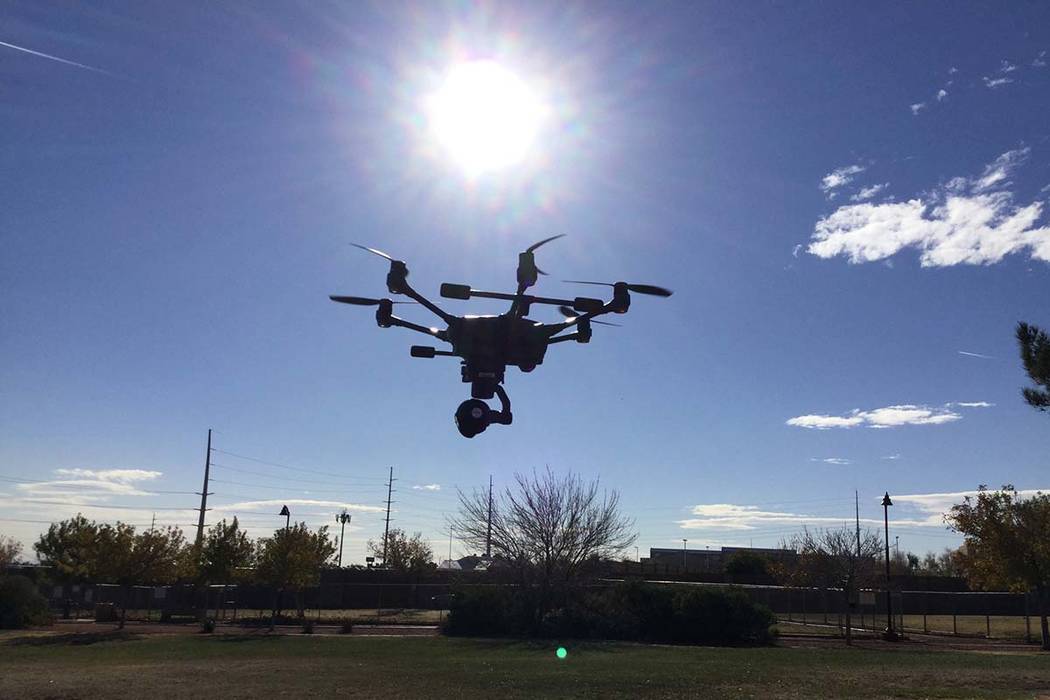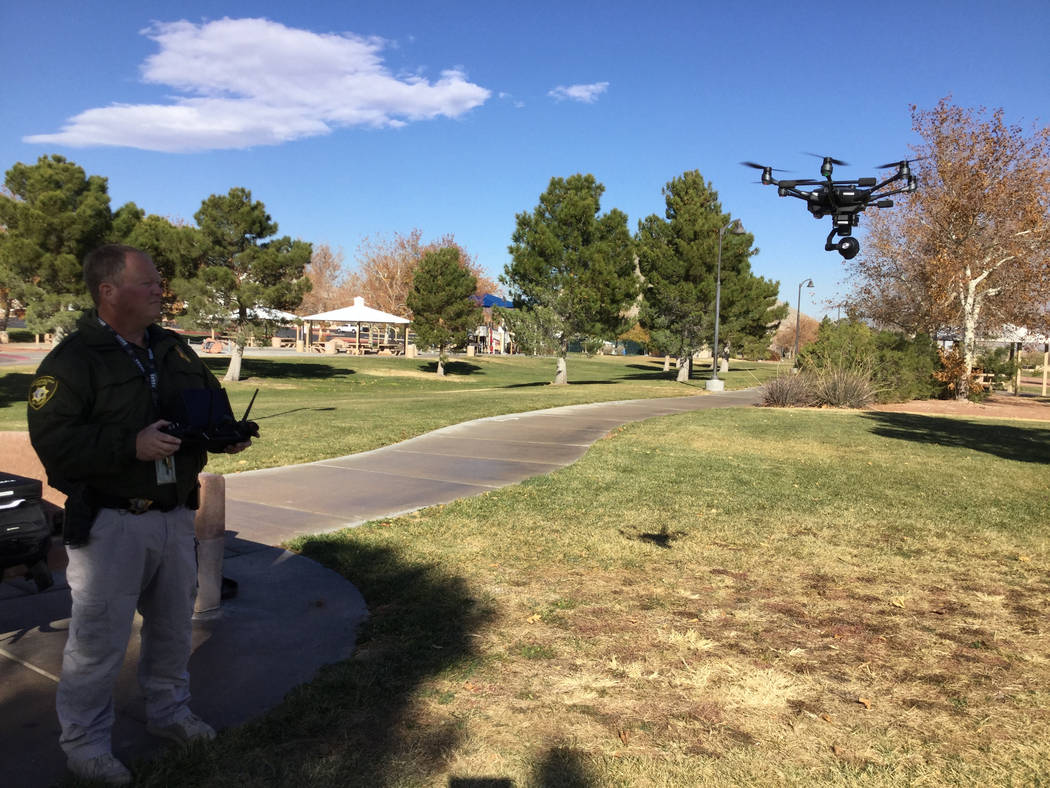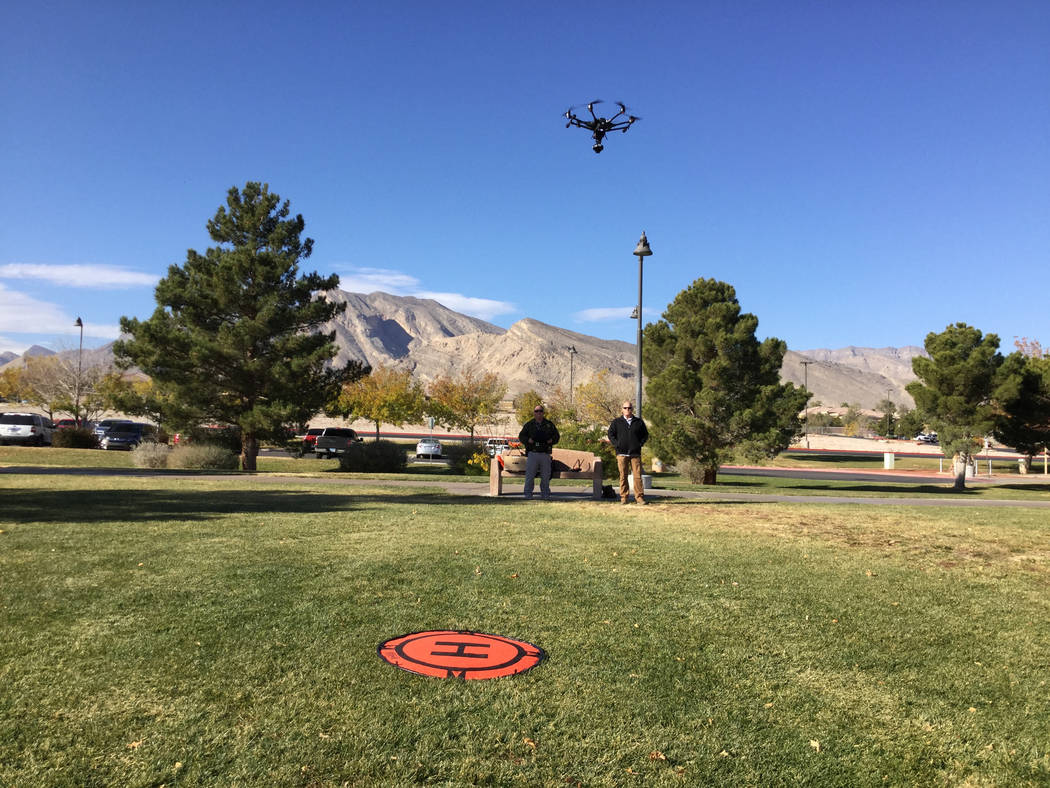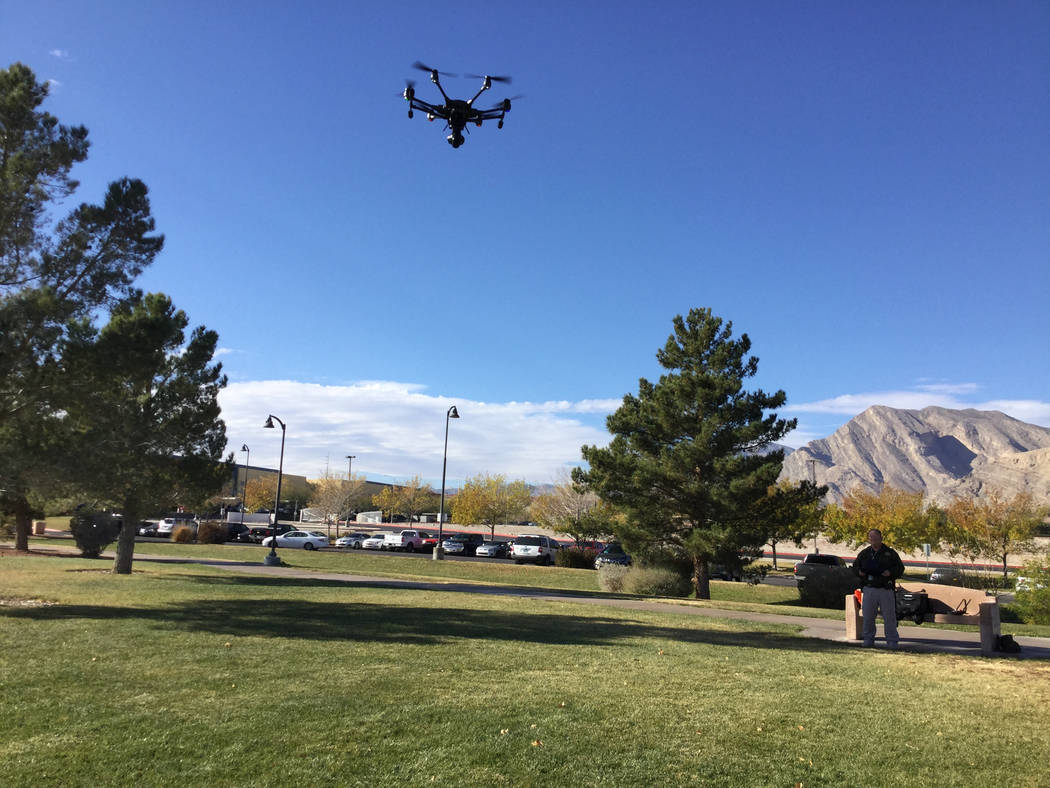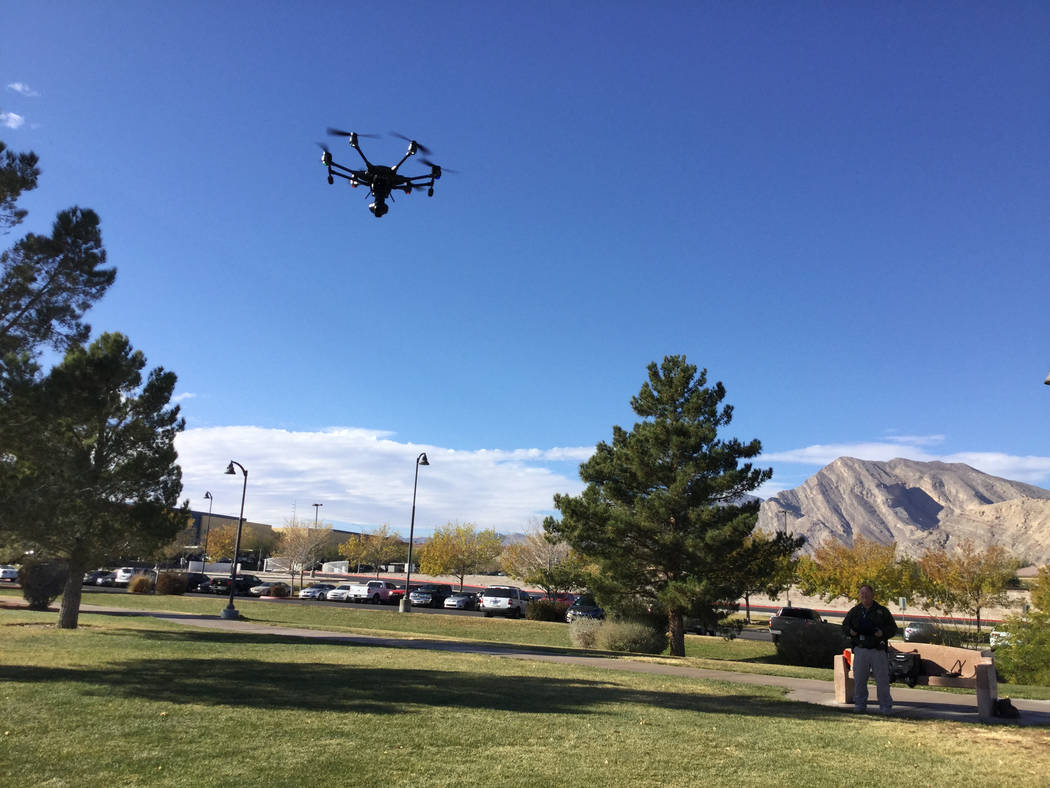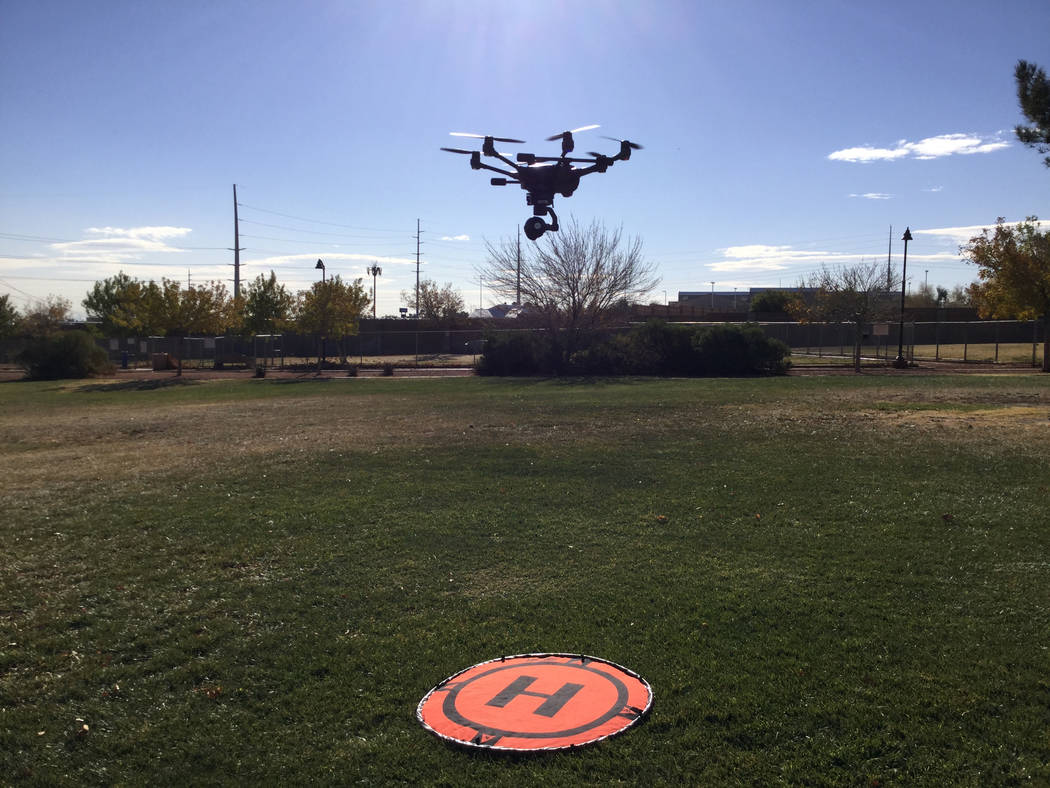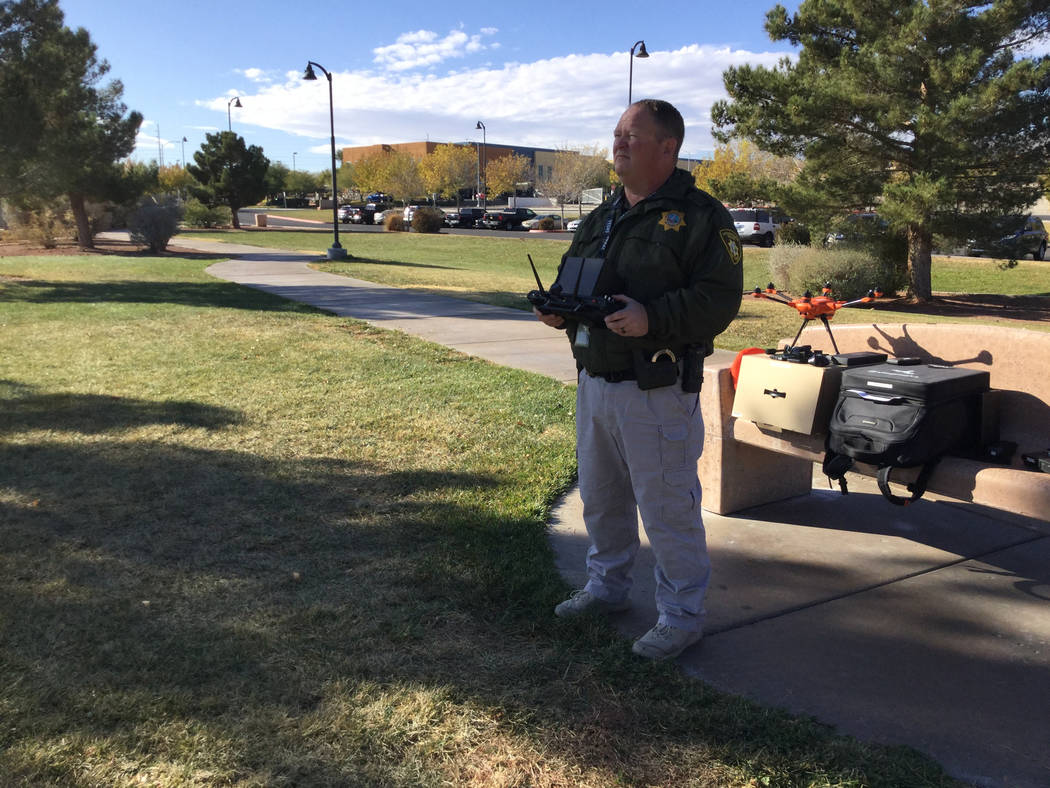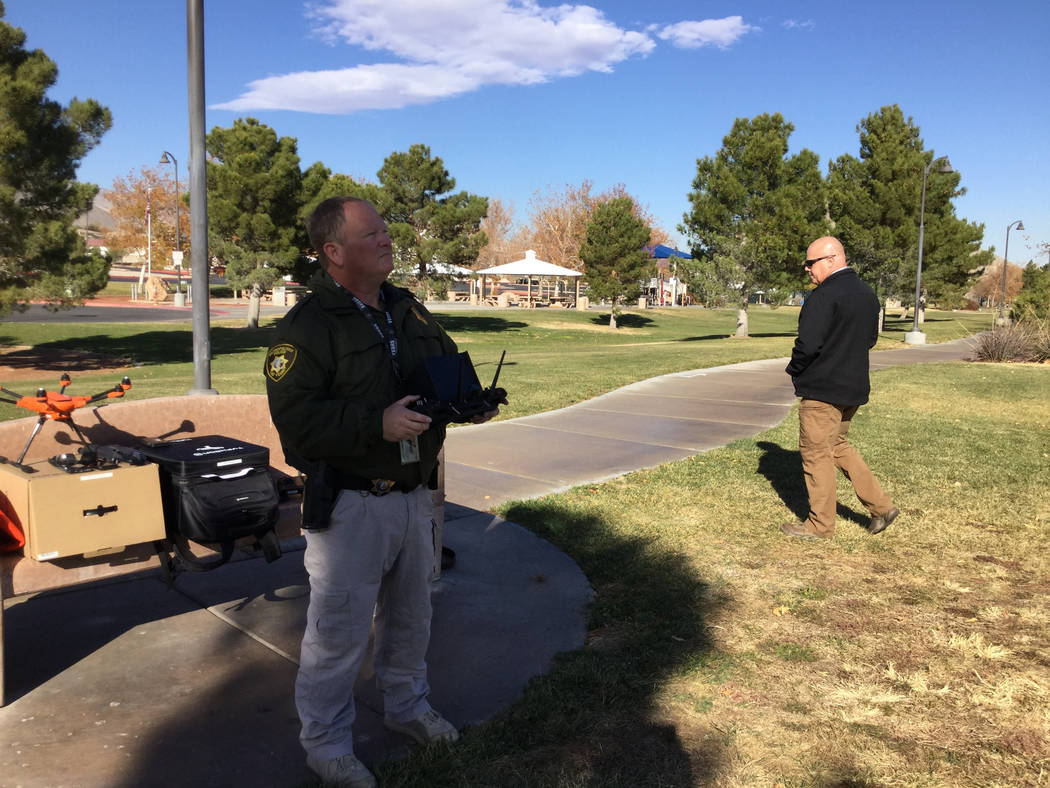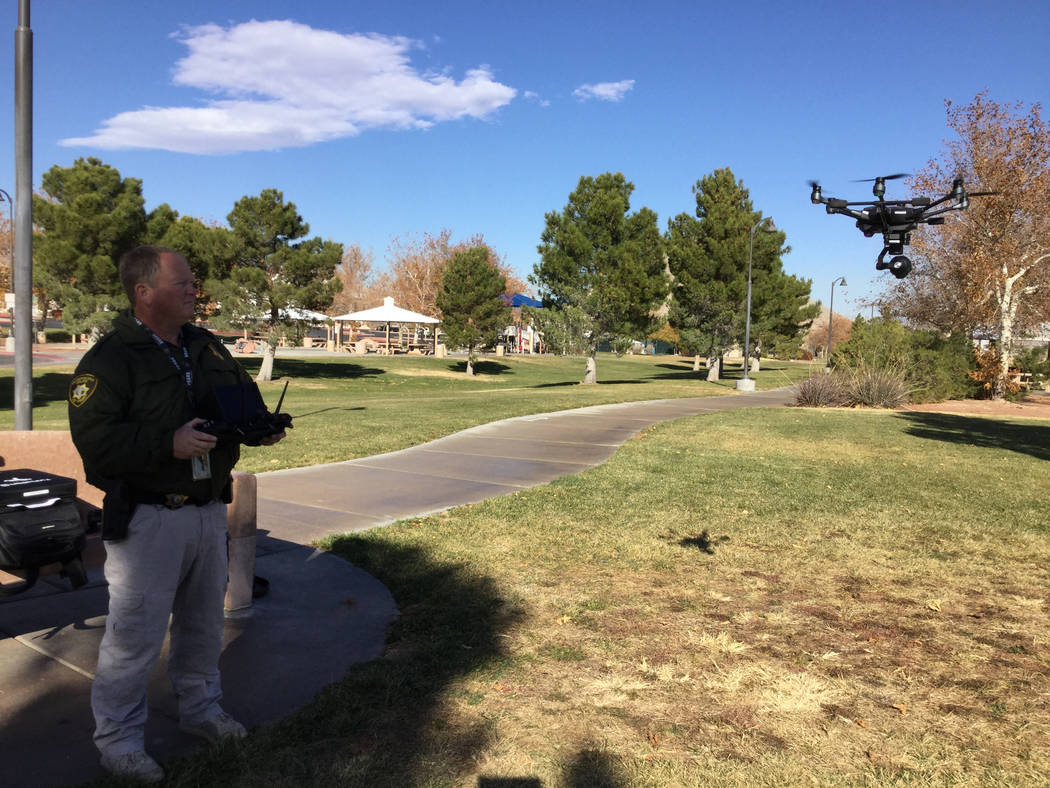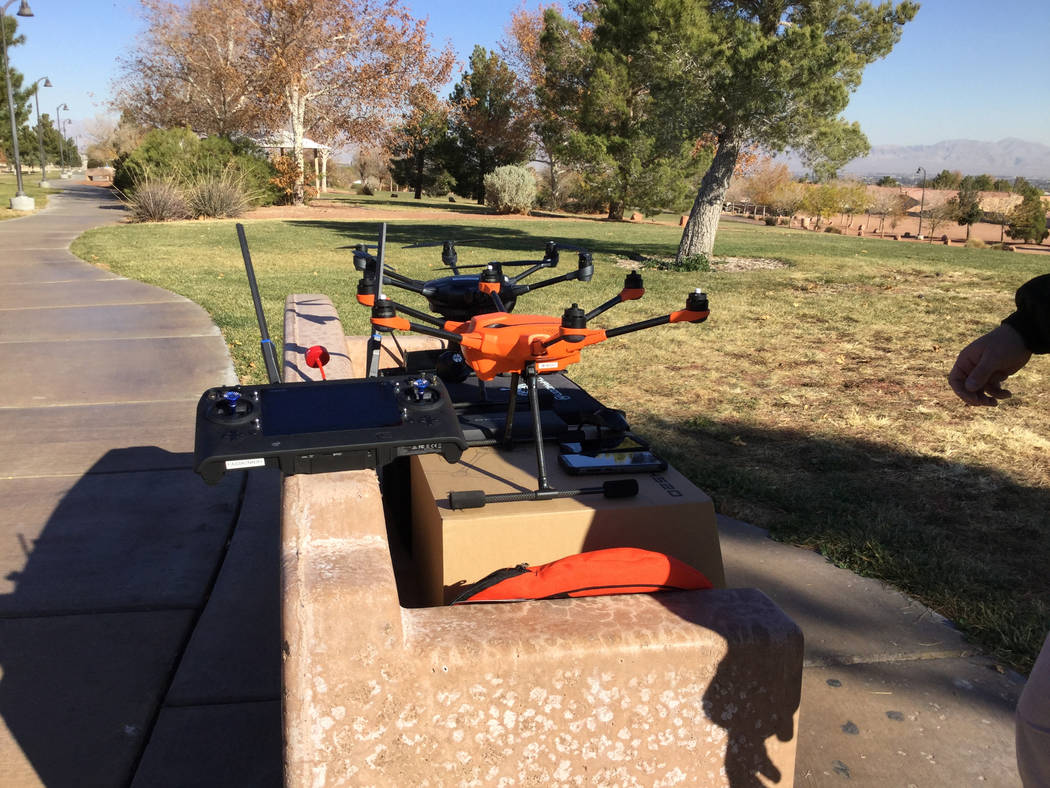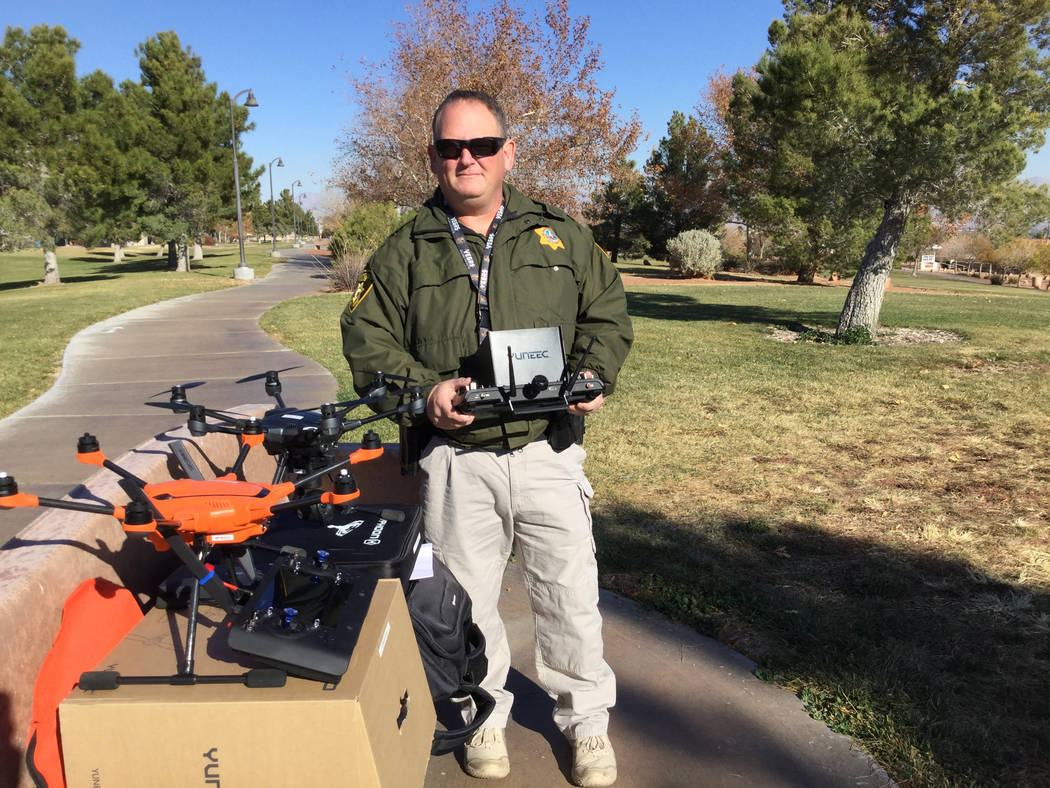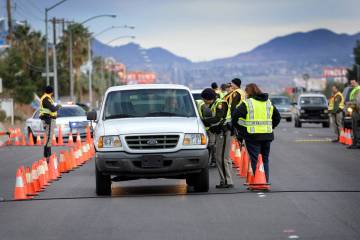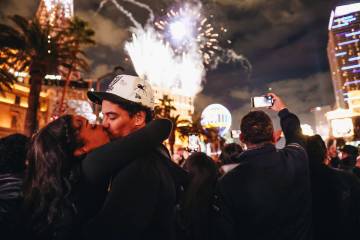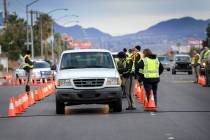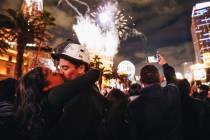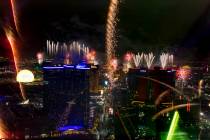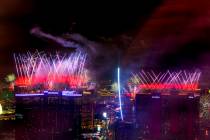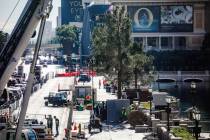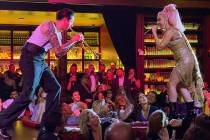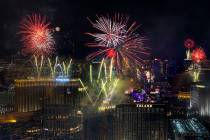Las Vegas police drones will monitor New Year’s Eve crowds
Las Vegas police will use drones to watch over New Year’s Eve celebrations on the Strip, technology the department was not able to use the night of the Oct. 1 mass shooting.
Officer David Martel said the department will use two drones — a Yuneec H520 and a Yuneec Typhoon 4 — to monitor crowds, identify suspicious packages and track any unusual activity on Strip properties.
Martel said the unmanned aerial vehicles also will check hotel windows for anyone who might try to copy the events of Oct. 1, when a gunman shattered the windows of his 32nd-floor suite at Mandalay Bay and sprayed bullets on 22,000 concertgoers at a nearby outdoor music festival. The gunman killed 58 people and injured more than 500 others before killing himself.
“The biggest thing is to provide support to our officers and to provide a better aerial view,” Martel said Wednesday. “It’s hard to get the helicopter along the Strip. Drones are a lot smaller, and you’re able to get into tighter areas.”
Those tighter areas might be especially helpful to get a closer look at unaccompanied packages, for example, he said.
Having the drones monitor crowds from an aerial view also will help police better position barricades and other pedestrian control devices, he said.
Metro drone use
Metro purchased five drones from Yuneec earlier this year for $15,000. Martel estimated the drones arrived Sept. 27, just days before the mass shooting. They were still in unopened boxes in a hangar at the North Las Vegas airport when the shooting occurred.
He headed to the hangar as quickly as he could when he got word of the shooting Oct. 1, hoping to use the drones to support first responders.
But the drones arrived to the department fresh from the manufacturer. The batteries weren’t charged. Martel said it would have taken an hour to get them fully charged, and the gunfire lasted for about 10 minutes.
Had Martel been able to take a fully charged drone with him the night of the shooting, he said he would have used it to locate people who needed help — at least one of the drones is equipped with thermal imaging sensors.
Others have a much broader vision for how drones could have helped police address the shooter on Oct.1 — though current policy and technology would have to evolve to support this vision.
Active-shooter situations
The day after the shooting, Martel used one of the department’s drones to create a 3-D map the crime scene.
“You can kind of re-enact a scene, in some aspects,” he said. “It’s documenting evidence,” like the locations of shell casings.
Had Martel gotten to the scene of the crime much, much earlier, he said the drone could have been used to gather information about what was happening and where.
Metro initially estimated that it took 72 minutes from the first 911 call for law enforcement to the moment police breached the shooter’s hotel room on the 32nd floor of Mandalay Bay, though the timeline is still under review.
Police began searching the hotel’s 29th floor before determining the gunman was on the 32nd floor.
“Think about how useful a drone might have been if we have situations like this (Las Vegas shooting) now for large events,” Brian Levin, director of The Center for the Study of Hate and Extremism at California State University-San Bernardino, told the Los Angeles Daily News in October. “You have a guy on the 32nd floor (of a hotel), a drone could have provided real-time intelligence and surveillance to what’s going on.”
However, knowing exactly where the gunman was might have been hard to pinpoint, Martel said, because every building has different ways of classifying levels. For instance, some resorts might mark the ground level as lobby instead of as the first floor, or the second level as mezzanine.
A broader vision
Ryan Wallace, a professor at Polk State College in Lakeland, Florida, envisions a much broader use for drones in situations like the Oct. 1 shooting.
“When you look at the (gunman Stephen) Paddock scenario, you have about 10 minutes of serious carnage. If you have a distraction created by a drone, you could have bought critical moments that could have saved lives,” Wallace told the Review-Journal.
In an October paper Wallace co-authored with Jon Loffi, a professor at Oklahoma State University, in the International Journal of Aviation, Aeronautics and Aerospace, Wallace and Loffi advocated using drones for tactical operations, and even equipping drones with nonlethal equipment, like tear gas or smoke canisters.
“It’s a very unanticipated type of response from law enforcement,” Wallace said. “When you’re dealing with any scenario, and especially one as well-planned as Paddock had clearly taken the effort to plan, an unexpected tactical response, like a drone, probably would have created a distraction.”
For those few seconds, the gunman may have redirected his fire to shoot at the drone, or if he was impacted with something like tear gas he may have taken a break from firing at all.
Surprise responses can allow “a tactically poor situation to be turned into a tactically superior situation,” Wallace said.
A while out
Nevada is one of five states that ban the use of weaponized drones — North Carolina, Oregon, Vermont and Wisconsin are the others, according to the National Conference of State Legislatures. Two others, Maine and Virginia, ban law enforcement from using them altogether, according to the organization.
The Nevada law prohibits a drone from being “weaponized” and makes it unlawful for a person to operate “a weaponized unmanned aerial vehicle.” Violators can be found guilty of a category D felony.
Nevada Gov. Brian Sandoval told the Review-Journal in early December that weaponizing drones is “something that Metro should look at.”
“We should take advantage of all advances in technology to make sure that people are as safe as they possibly can be,” Sandoval said, adding that weaponizing drones is something he would like to discuss further.
Martel said equipping a drone with temporary blinding lights, tear gas or smoke canisters falls into a gray area.
Are those considered weapons or tools? The Nevada law does not define what constitutes a weapon.
North Dakota is the only state that allows police to use weaponized drones but limits the use to “less lethal” weapons such as stun guns.
There are currently no federal regulations against owning an armed drone.
Contact Nicole Raz at nraz@reviewjournal.com or 702-380-4512. Follow @JournalistNikki on Twitter.
Five drones
Metro purchased five drones from Yuneec for $15,000.
Officer David Martel, Metro's small unmanned aerial system program manager, said that figure includes all of the drone equipment, such as blades, batteries and chargers.
He said it took the department three years to get everything in place to be able to have drones, including developing internal drone handling polices.
Martel estimated the drones arrived Sept. 27, just days before the Oct. 1 Las Vegas shooting.
The five drones are spread across three of Metro's units: crime scene investigation, fatal and armor.



